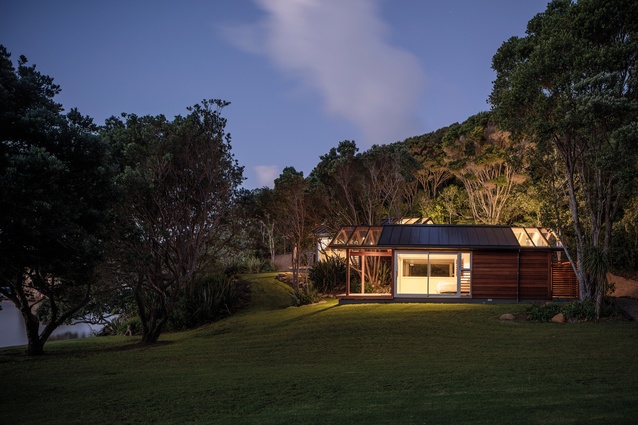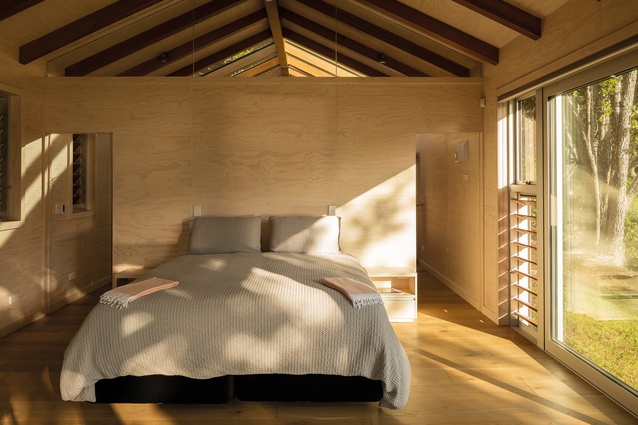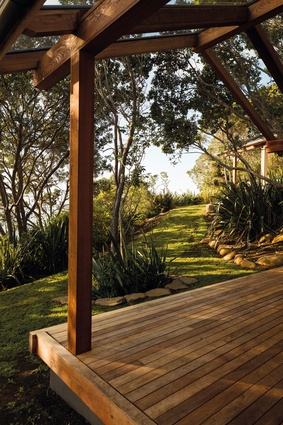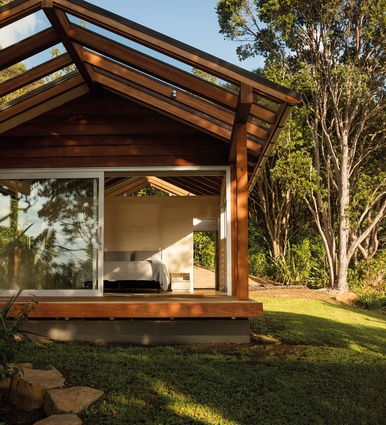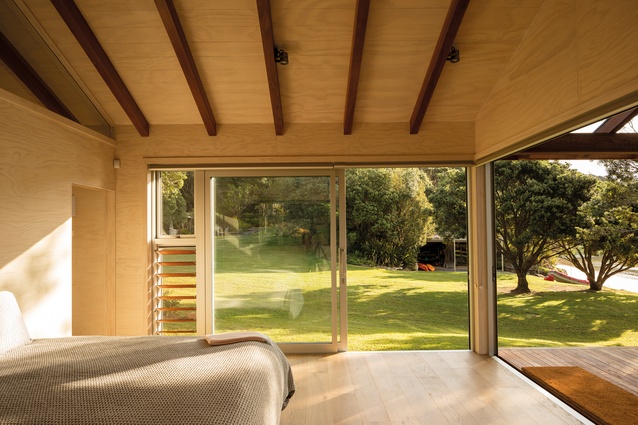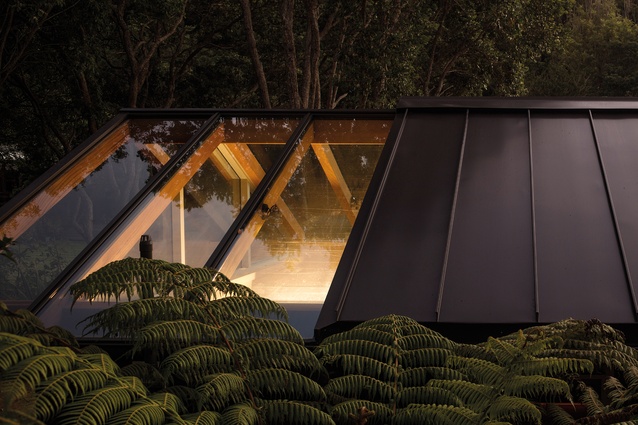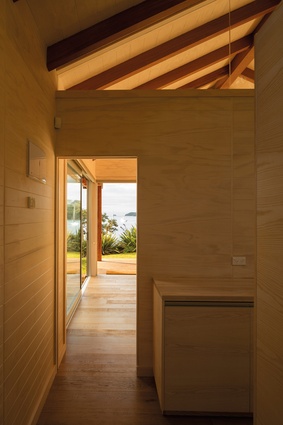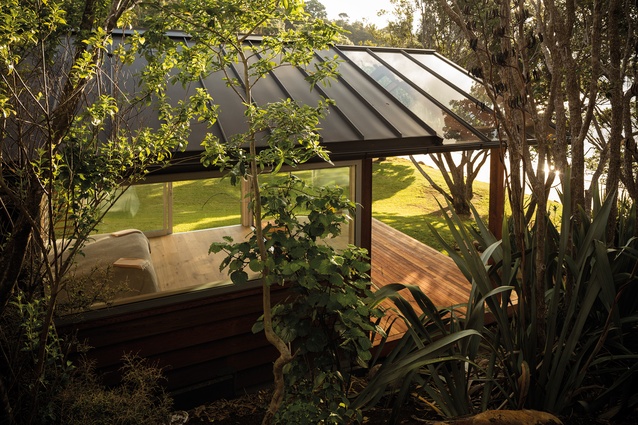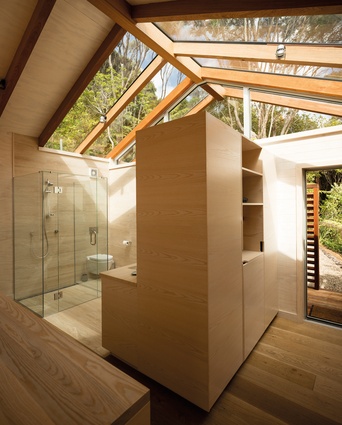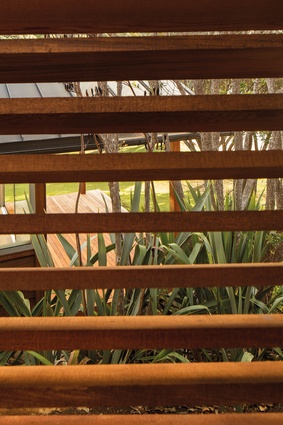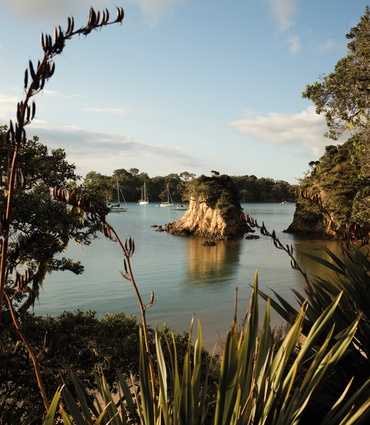Houses revisited: Seaside cabins
In the Bay of Islands, two identical cabins appear to dissolve at either end into their coastal bush setting. First published in 2016.
There’s a common misconception that architecture has to be big and extravagant and opulent to be successful or desirable. Not true. These two identical cabins, on a protected piece of coastline in the Bay of Islands, have a sense of craft and scale that belies their size. In conceiving this project, architect Noel Lane, in association with architect Tom Rowe, has delivered a pair of gems that just make you want to climb in your car and head north.
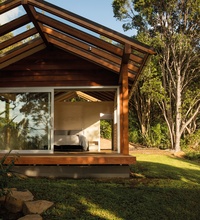
Lane designed the cabins nine years ago while Tom Rowe was working for him. Lane then went on to assist with the design and manufacture of fast amphibious vehicles for Gibbs Technologies while, in 2010, Rowe set up his own practice, Rowe Baetens Architecture. Throughout, the pair have continued to work together, with Rowe following through with the cabins project, working on the detailing and liaising with the client during construction.
Now built, a large part of the cabins’ success can be attributed to their modesty and familiarity. In truth, at first glance, they don’t even look architectural – they have the appearance of being extremely simple structures that could have been erected in a couple of days. But that was the intent, according to the architect: “They’re basically two rustic-looking huts that have been positioned and designed to assimilate into the bush,” explains Rowe. “Their expression is deliberately light and effortless. We wanted them to feel very delicate, yet grounded in the landscape.”
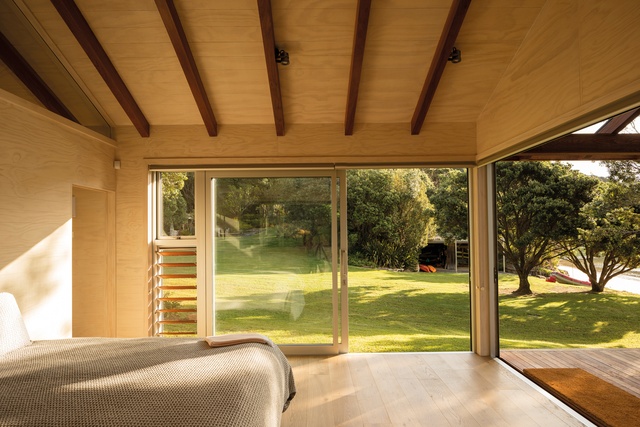
To achieve this, the architects deconstructed the visual mass of the structures by covering almost half the exterior walls and roof in glass. Over the front decks and above the bathrooms at the rear, the aluminium tray roof profile gives way to large sheets of glass, leaving the structural beams exposed; and in the bedroom, one whole corner is glass that can be slid away. “It was an exercise in dematerialisation, in that the structure dissolves away around the eaves as you move towards each end of the cabin,” Rowe says.
A notable interior design feature is the three-quarter-height interior walls that create triangular cut-outs beneath the roof pitch. These allow much more light to circulate around the cabins and showcase the beautiful, ribbed ceilings. “It’s a design philosophy that is applied to much of Noel’s architecture,” states Rowe. “We wanted to give a sense of being in the whole space and relating to the form of the building, not just from within one room. If the walls were to run full-height, it would be a completely different volume,” he adds.
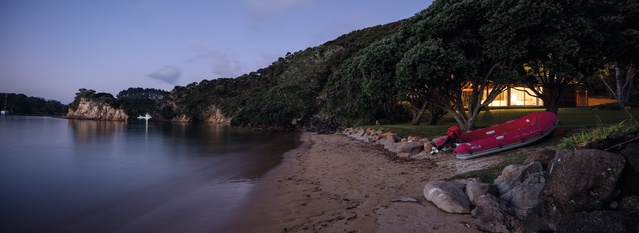
The resulting transparency serves several functions – to let light in, to illuminate the space and, also, to give the cabins’ occupants a real sense of being in touch with the environment and landscape.

Aside from glass, the predominant material in the cabins is wood. The exterior is clad in cedar while, inside, the floors are American oak, the walls are a smooth, grooved plywood and the ceilings are from the same ply, only roughened using a bandsaw. The rafters are hewn from South American tonka, which is used in its native country for reinforcing mine shafts and last at least for 50 years.
The entrances to the cabins are at the rear and can be found via a rustic pathway through the bush. “The transition is very gentle,” explains Rowe. “You start by walking through a canopy of bush, which changes into a canopy threshold of rafters and glass as you enter each cabin. Then, as you walk through into the bedroom, the view is out in front of you.”
At no point during the journey into and through these cabins is the connection with the natural environment lost. The cabins are all about their surroundings, making you almost forget that you’re in a building. “They’re simple, honest and not excessive – and I think that’s what people like about them,” says Rowe.
MATERIAL SELECTOR
Architect Tom Rowe explains how his and Noel Lane’s design for the Seaside Cabins dealt with natural light.
Why did you choose a glass roof as a key feature of your design?
The glass roof reinforces the canopy of the surrounding bush at each end of the cabin, providing a spatial threshold of structure between the bush, the interior and the coast. This enables a sense of expansiveness, integrating the interior with the landscape.
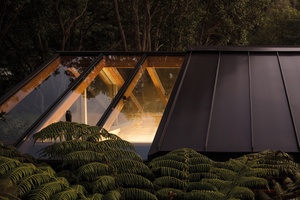
What type of glazing system did you specify and why?
Given the proximity to the sea and the inherent need for durability, an anodised aluminium profile was selected as the most appropriate glazing system. Over time, the cedar cladding takes on a natural silver patina and the silver joinery will harmonise with the colour of the cladding.
How do the louvres and pergola assist in controlling the light into the interior?
Louvres were used as a device to the rear of the cabins to screen the entry and enable light, while preserving privacy to the exterior showers.
Click here to see more Houses Revisited. And sign up to our email newsletters to receive Houses Revisited straight to your inbox.
Note: These are stories from our archives and, since the time of writing, some details may have changed including names, personnel of specific firms, registration status, etc.

